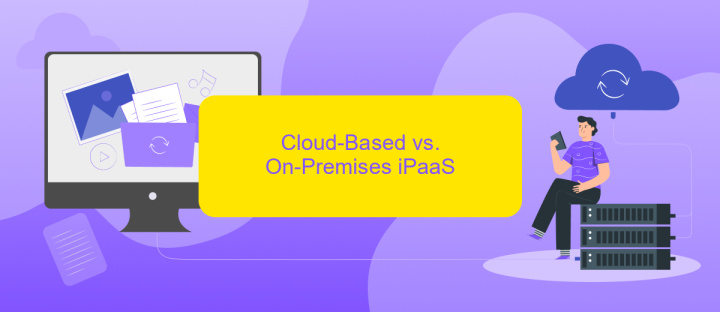iPaaS Growth
The rapid expansion of Integration Platform as a Service (iPaaS) is revolutionizing the way businesses manage data and applications. By seamlessly connecting disparate systems, iPaaS enables organizations to streamline operations, enhance agility, and drive innovation. This article delves into the factors fueling iPaaS growth, its benefits, and the future trends shaping this dynamic sector.
iPaaS Market Overview
The iPaaS (Integration Platform as a Service) market has experienced significant growth in recent years, driven by the increasing need for seamless integration of various applications and data sources in businesses. This growth is fueled by the demand for efficient and cost-effective solutions that enable organizations to streamline their operations and enhance productivity. iPaaS platforms offer a unified approach to managing integrations, reducing the complexity associated with traditional integration methods.
- Scalability: iPaaS solutions can easily scale with the growing needs of businesses.
- Cost-Effectiveness: They reduce the need for extensive IT infrastructure and maintenance.
- Flexibility: iPaaS platforms support a wide range of applications and data sources.
- Real-Time Integration: These solutions provide real-time data synchronization across systems.
- User-Friendly: Many iPaaS platforms, like ApiX-Drive, offer intuitive interfaces for easy setup and management of integrations.
As companies continue to adopt digital transformation strategies, the iPaaS market is expected to expand further. Services like ApiX-Drive play a crucial role in this growth by offering robust integration capabilities that cater to both small businesses and large enterprises. The ability to quickly and efficiently connect disparate systems makes iPaaS an indispensable tool in the modern business landscape.
Key Growth Factors and Trends

The growth of Integration Platform as a Service (iPaaS) is driven by several key factors and trends. One of the primary drivers is the increasing need for businesses to integrate disparate systems and applications efficiently. As organizations continue to adopt a variety of cloud-based and on-premises solutions, the demand for seamless interoperability has surged. This has led to the rise of user-friendly iPaaS solutions like ApiX-Drive, which simplify the integration process and reduce the need for extensive coding knowledge.
Another significant trend is the growing emphasis on automation and real-time data synchronization. Businesses are seeking ways to automate workflows and ensure that data flows smoothly between applications without manual intervention. iPaaS platforms are evolving to offer advanced features, such as AI-driven integration and pre-built connectors, to meet these needs. Additionally, the scalability and flexibility of iPaaS solutions make them an attractive option for companies looking to expand their digital ecosystems rapidly. As a result, the iPaaS market is expected to continue its upward trajectory, driven by these technological advancements and the increasing complexity of business IT environments.
Cloud-Based vs. On-Premises iPaaS

When considering iPaaS solutions, businesses often face the choice between cloud-based and on-premises options. Cloud-based iPaaS offers several advantages, such as reduced upfront costs, scalability, and automatic updates. These platforms are hosted on the provider's servers, making them accessible from anywhere with an internet connection. This can be particularly beneficial for businesses with remote teams or those that need to integrate multiple cloud applications.
- Accessibility: Cloud-based iPaaS can be accessed from any location, while on-premises solutions require physical presence or VPN access.
- Scalability: Cloud solutions can easily scale up or down based on demand, whereas on-premises systems may require additional hardware investments.
- Maintenance: Cloud providers handle updates and maintenance, reducing the IT burden on businesses, while on-premises solutions require in-house management.
On the other hand, on-premises iPaaS offers greater control over data and security, which can be crucial for industries with strict compliance requirements. However, they often entail higher initial costs and ongoing maintenance. Tools like ApiX-Drive can simplify integration processes regardless of the chosen iPaaS model, providing a unified platform for seamless connectivity between various applications.
Benefits and Value Proposition of iPaaS

iPaaS (Integration Platform as a Service) offers a streamlined way to manage and integrate diverse applications and data sources. By providing a centralized platform, it simplifies the complexities involved in connecting various systems, allowing businesses to focus on their core operations.
One of the key benefits of iPaaS is its ability to automate workflows and data synchronization, reducing manual efforts and minimizing errors. This leads to increased efficiency and productivity, as well as enhanced data accuracy. Additionally, iPaaS platforms like ApiX-Drive enable businesses to quickly set up integrations without requiring extensive coding knowledge.
- Seamless integration of diverse applications
- Automated workflows and data synchronization
- Reduced manual efforts and errors
- Increased efficiency and productivity
- Enhanced data accuracy
- User-friendly setup with minimal coding
Overall, iPaaS delivers significant value by enabling businesses to operate more efficiently and effectively. Platforms such as ApiX-Drive make it easier for organizations to integrate their systems, ensuring smooth data flow and optimal performance. This not only saves time and resources but also supports better decision-making through improved data management.
Future Outlook and Opportunities
The future of iPaaS (Integration Platform as a Service) looks promising as businesses continue to prioritize seamless integration of their diverse applications and data sources. With the rise of digital transformation, companies are increasingly seeking agile and scalable solutions to streamline their operations. iPaaS providers are expected to innovate continuously, offering enhanced functionalities, better security, and more user-friendly interfaces. As more organizations adopt hybrid and multi-cloud environments, the demand for robust iPaaS solutions will only grow, ensuring that businesses can maintain connectivity and efficiency across various platforms.
Moreover, opportunities abound for services like ApiX-Drive, which specialize in simplifying the integration process. By providing a user-friendly platform that allows businesses to automate their workflows without extensive coding knowledge, ApiX-Drive can play a crucial role in the expanding iPaaS market. As organizations strive to improve their operational efficiency, the ability to quickly and easily connect disparate systems will become a significant competitive advantage. Therefore, the future of iPaaS is not just about integration but also about empowering businesses to innovate and scale effectively.
- Automate the work of an online store or landing
- Empower through integration
- Don't spend money on programmers and integrators
- Save time by automating routine tasks
FAQ
What is iPaaS?
How does iPaaS support business growth?
What are the key features to look for in an iPaaS solution?
How can iPaaS improve the automation of business processes?
What are some common use cases for iPaaS?
Apix-Drive is a universal tool that will quickly streamline any workflow, freeing you from routine and possible financial losses. Try ApiX-Drive in action and see how useful it is for you personally. In the meantime, when you are setting up connections between systems, think about where you are investing your free time, because now you will have much more of it.


